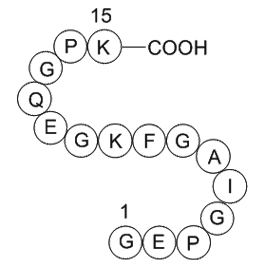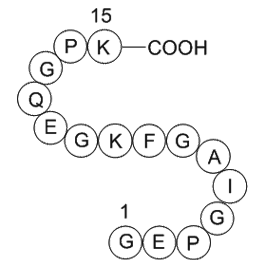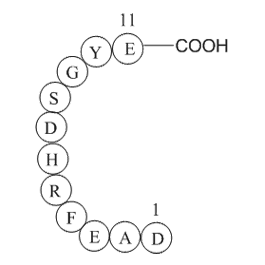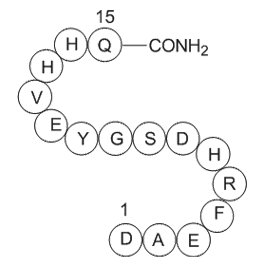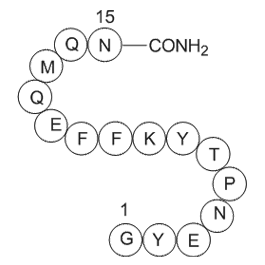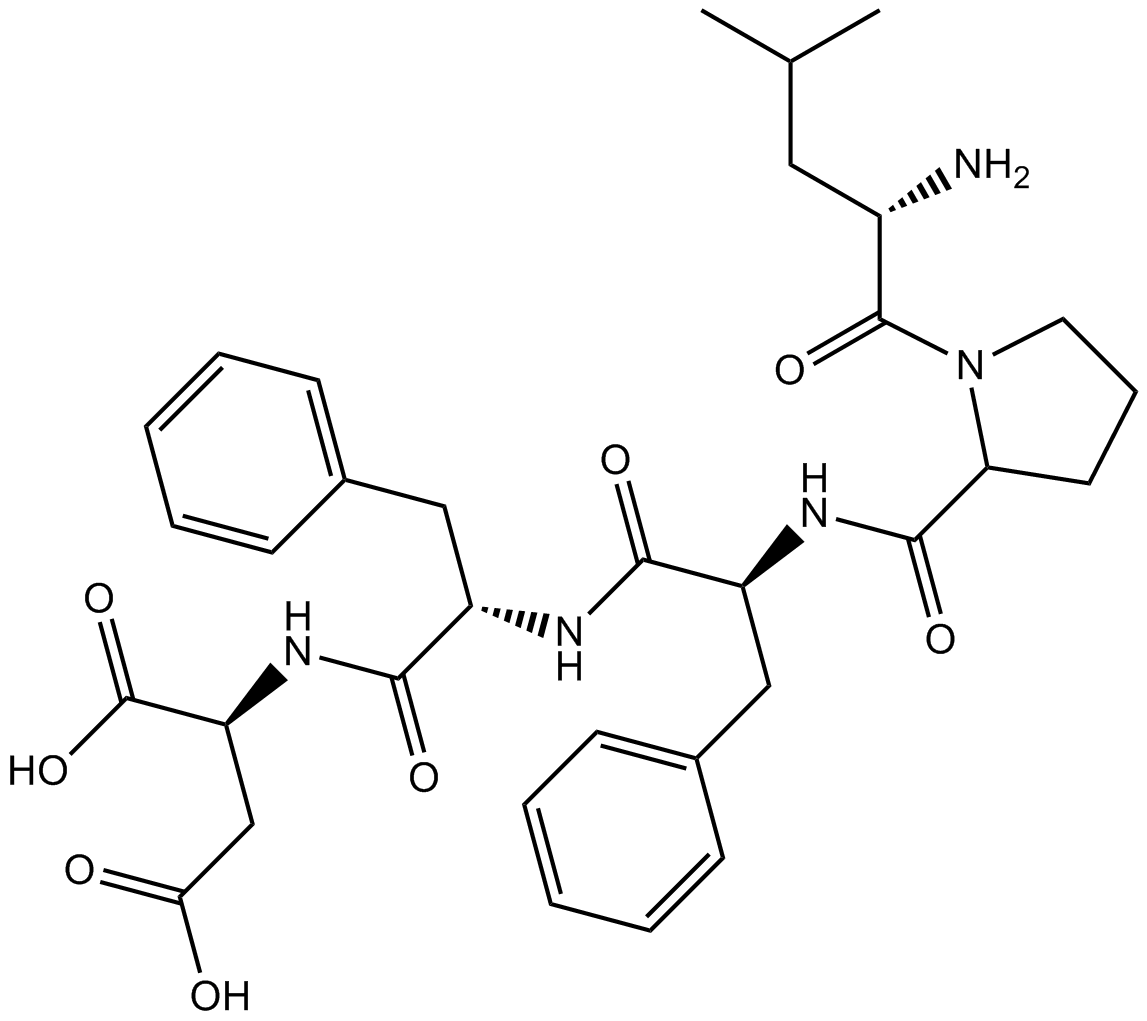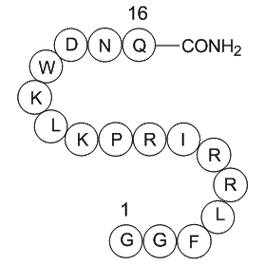type II collagen fragment
Type II collagen is composed of a triple helix of three identical α chains. These molecules associate to form a fibril that is stabilized by intermolecular crosslinks1. Damage to the fibrillar meshwork, made up of primarily type II collagen (z 90–95%), may be a critical event in the pathology of many arthritides, due in part to the very slow rate of collagen turnover within the cartilage2.
Type II collagen and aggrecan (a large, aggregating proteoglycan) are the two major components of the extracellular matrix of cartilage. The collagen, which is present in a fibrillar form, provides tensile strength whereas the aggrecan is responsible for compressive stiffness of cartilage3-5. Early damage to type II collagen is predominantly pericellular/ territorial suggests that in the majority of cases collagen damage was mediated by the chondrocyte.
C106H174N32O37
Figure1. Structure of Type II collagen
Figure2. Formula of Type II collagen fragmen
Ref:
1.Eyre, D.R. 1987. Collagen cross-linking amino acids. Methods Enzymol. 144:115–139.
2.McAnulty, R.J., and G.J. Laurent. 1990. In vivo measurement of collagen metabolism in cartilage and bone. In Methods in Cartilage Research. A. Maroudas and K. Kuettner, editors. Academic Press Inc., San Diego, CA. 140–142.
3.Kempson, G. 1980. The mechanical properties ofarticular cartilage. In The Joints and Synovial Fluid. Volume 2. L. Sokoloff, editor. Academic Press Inc.,New York. 238-239.
4.Schmidt, M. B., V. C. Mow, L. E. Chun, and D. R. Eyre. 1990. Effects of proteoglycan extraction on the tensile behaviour ofarticular cartilage. J. Orthop. Res. 8:353-363.
5.Poole, A. R. 1993. Cartilage in health and disease. In Arthritis and Allied Conditions: A Textbook of Rheumatology. D. J. McCarty and W. J. Koopman, editors. Lea & Febiger, Philadelphia. 279-333.
| Physical Appearance | A solid |
| Storage | Store at -20°C |
| M.Wt | 1471.61 |
| Formula | C65H102N18O21 |
| Synonyms | H2N-Gly-Glu-Pro-Gly-Ile-Ala-Gly-Phe-Lys-Gly-Glu-Gln-Gly-Pro-Lys-OH |
| Solubility | ≥147.1 mg/mL in DMSO; ≥12.56 mg/mL in EtOH; ≥56.2 mg/mL in H2O |
| SDF | Download SDF |
| Canonical SMILES | NCC(NC(CCC(O)=O)C(N1CCCC1C(NCC(NC(C(C)CC)C(NC(C)C(NCC(NC(CC2=CC=CC=C2)C(NC(CCCCN)C(NCC(NC(CCC(O)=O)C(NC(CCC(N)=O)C(NCC(N3C(C(NC(CCCCN)C(O)=O)=O)CCC3)=O)=O)=O)=O)=O)=O)=O)=O)=O)=O)=O)=O)=O |
| Shipping Condition | Small Molecules with Blue Ice, Modified Nucleotides with Dry Ice. |
| General tips | We do not recommend long-term storage for the solution, please use it up soon. |
Quality Control & MSDS
- View current batch:
Chemical structure
